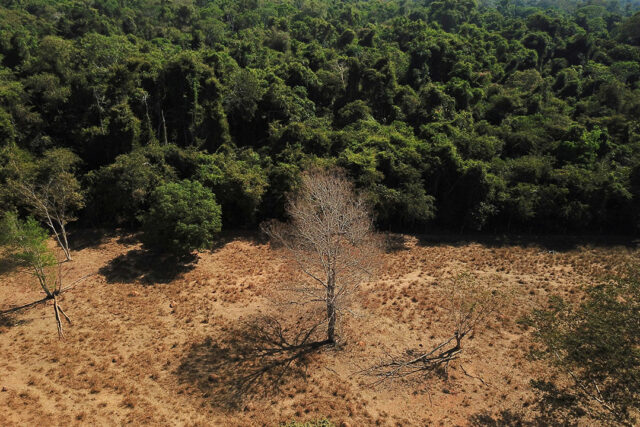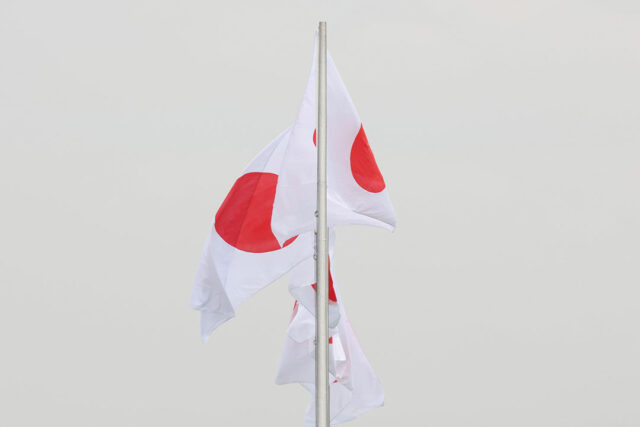KAKAMIGAHARA, Japan – For much of its 72 years, Hitoshi Fujita’s company was just another mom-and-pop business grinding out metal parts. Then it did something unusual for a small Japanese manufacturer: it expanded, buying two neighboring firms in the last decade.
If more small companies don’t follow suit, Fujita says, the country that transformed global manufacturing in the 20th century is looking at a dim future.
Years of faltering growth and population decline left many of Japan’s small and medium-sized firms squeaking by on state help and almost-free funding. These companies, which account for around seven out of 10 jobs, now face a shake-up as pandemic-era support dwindles and interest rates rise for the first time in 17 years.
Japan’s government is willing to let more underperforming companies fail, three senior government officials told Reuters, a previously unreported acknowledgment that they said reflects an urgent need to replace sclerotic businesses with those able to deliver growth.
While the officials did not expect such change to occur quickly, they described the shift in thinking as a clear departure for a country that has typically sought to avoid bankruptcies and protect existing jobs at the cost of productivity.
The move will help Japan channel workers and investment to its most productive companies in a tight labor market, boosting wages, said the officials, granted anonymity to discuss a sensitive issue.
To be sure, the government expects the change to come via mergers and acquisitions, rather than large-scale bankruptcies and lay-offs, one of the people said. The government has help centers to advise small businesses on M&A.
This rethink of Japan’s traditional approach to business faces several hurdles, not least the social contract that has governed the postwar economy, according to interviews with 20 people, including five government officials, bankers, industry experts and three business owners.
“Many owners of small manufacturers are from the generation before me and tend to manage their business as engineers,” said the 46-year-old Fujita, who runs Sakai Seisakusyo in Kakamigahara, central Japan. “They don’t really have applicable skills when it comes to buying another company.”
Fujita’s firm makes parts for faucets and semiconductors, and he wants to expand more into higher-value components.
In a written response to questions, Japan’s Ministry of Economy, Trade and Industry said it would continue to support small and medium-sized enterprises (SMEs) with funding and other measures, adding that companies needed to boost their earning power through investment and increased productivity.
It said bankruptcies were now “on a slight upward trend” and had returned to pre-pandemic levels, while workers were changing jobs for better conditions, including higher wages.
“We will continue to closely monitor the situation to ensure bankruptcies do not increase at an inappropriate level that would cause the unemployment rate to rise,” it said.
ZOMBIE PROBLEM
Some 251,000 companies were “zombies” last year, meaning their profits didn’t cover interest payments over an extended period, according to research firm Teikoku Databank, the highest in more than a decade. The vast majority had 300 or fewer employees.
Under government measures released in March, banks are encouraged to help turn around weak companies instead of continuing to prop them up with loans. The measures don’t directly mention zombies or “economic metabolism,” a term policymakers use to refer to stronger companies replacing weaker ones.
When asked if more companies would be allowed to fail, one of the senior officials said, “Yes, that is correct.” But the government “cannot say that explicitly” as it would risk a public backlash that would be unwelcome for the ruling party, the official added.
“By stealth, we are doing this, gradually doing this,” the official said. “Japan’s future will be bleak if we cannot raise productivity.”
Japan ranks below the OECD average for annual wages and per capita GDP. The latter, a barometer of labor productivity, shows Japan at $33,834, behind France and Italy.
Still, there are limits to how much creative destruction Japan can stomach. In some rural areas, underperforming businesses remain essential to communities, a fourth official said.
The government is careful not to be seen as “abandoning” support for small companies, said Tatsuro Oya of law firm Ohe Tanaka and Oya, who has experience restructuring small companies.
“They are trying to ease the pain as much as possible through the safety net of redirecting workers to growing companies,” he said.
Prime Minister Fumio Kishida has pressured companies to boost pay. They delivered the biggest increase in three decades this year, averaging 5.1%, with smaller ones averaging 4.5%, according to the Rengo union group, although that doesn’t reflect wages at many non-unionized small companies.
‘ZERO-ZERO’
SMEs shouldn’t be recipients of “welfare policies,” said Akira Amari, an influential lawmaker from the ruling Liberal Democratic Party.
The aim is to help them increase productivity, profits and wages, so they can pay taxes, he said in an interview.
Japan spent 63.2 trillion yen, or about $400 billion, on SME support in the pandemic, according to a 2022 finance ministry report, with around $267 billion disbursed as “zero-zero” loans, which required zero collateral and had zero-interest-payment grace periods.
Bankruptcies have surged as the loans came due. Almost 5,000 companies went under between January and June, the highest first-half tally in a decade, according to Teikoku Databank. Bankruptcies jumped by a third last year.
Amari said repeated M&A would allow smaller companies to expand into higher-margin industries, and allow employees to learn new skills.
“We do not want medium-sized enterprises to remain medium-sized, they should aim to become large,” he said.
Fujita’s company in Kakamigahara made its most recent acquisition in 2020, buying a maker of auto and medical parts.
To negotiate terms, both sides agreed to use a consultant from the help center for small business acquisitions. The government paid half the consultant’s fees.
Some 1,681 small companies were acquired with the help of those centers in the year to March 2023, government figures show.
BREAK FROM PAST
One option for struggling firms is to increase prices, but that’s difficult to do after years of deflation.
Kiryu Shinkin Bank, a small lender in Gunma, north of Tokyo, last year established a team to help hard-hit corporate clients.
Business owners are reluctant to raise prices for fear of losing customers, said manager Takashi Harada. Owners also feel responsible to keep companies going for their employees, preventing drastic change, he said.
“They are so focused on not going out of business,” Harada said.
Still, some family firms are breaking the mold.
When Yukiko Izumi took over her family’s cookie company, Izumiya Tokyoten, after her father died six years ago, it had lost money for a decade.
She cut costs, moved the headquarters from Tokyo to inside its factory in industrial Kawasaki, and raised prices for the first time in 15 years.
She worked with an illustrator to design a new cat-themed product line. It faced some initial internal resistance, but now sells 120,000 packages annually, “a big hit” for the 97-year-old Izumiya, which reported profits for the last three years.
“My father and I did not see eye-to-eye on how to break with the old way of doing things and improve productivity,” Izumi said. “So I decided to change things.”
Now, she is looking to broaden her customer base by targeting inbound tourists.
But for many businesses, crunch time looms as the easy-money era ends and a weak yen drives up costs.
Yasushi Noro, president of NBC Consultants, which advises SMEs, said he hears more from companies struggling with debt and expects that to increase as interest rates go up.
“The SME model that worked until now because of low interest rates is crumbling,” he said. – Reuters












